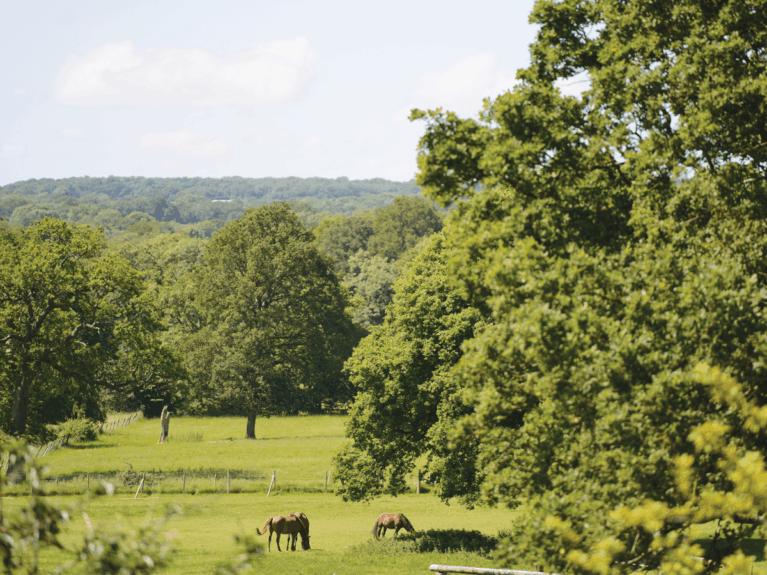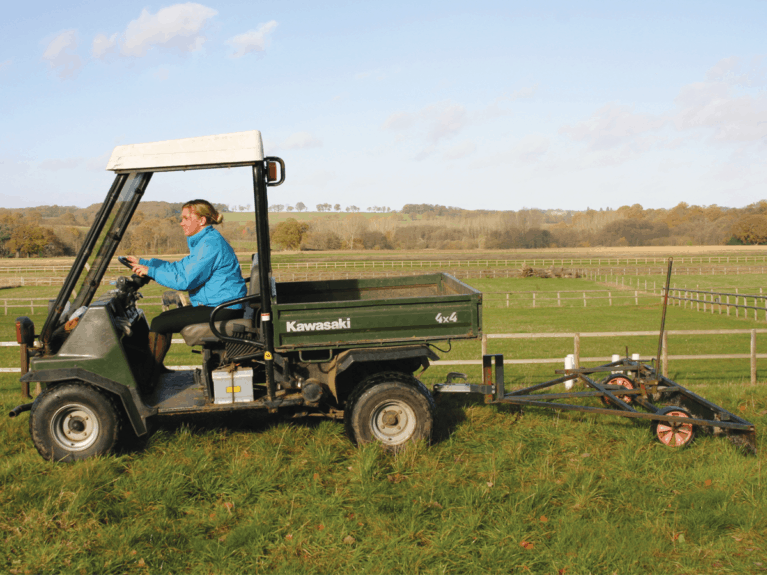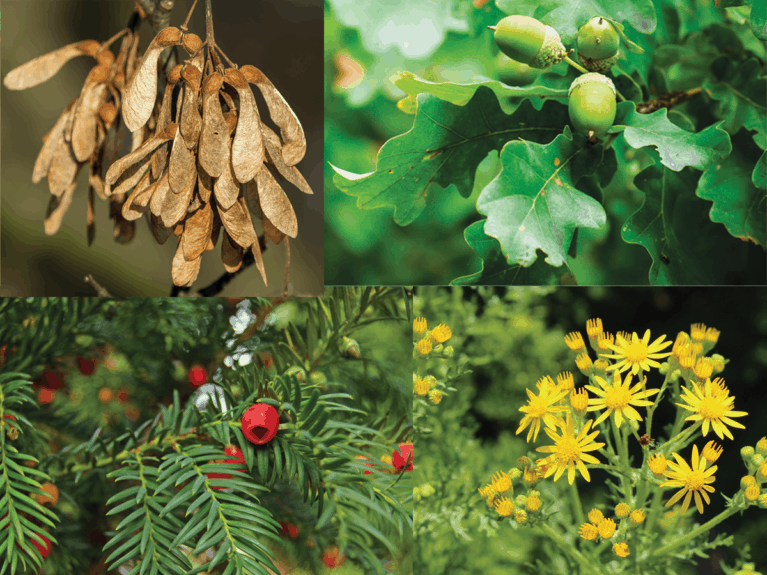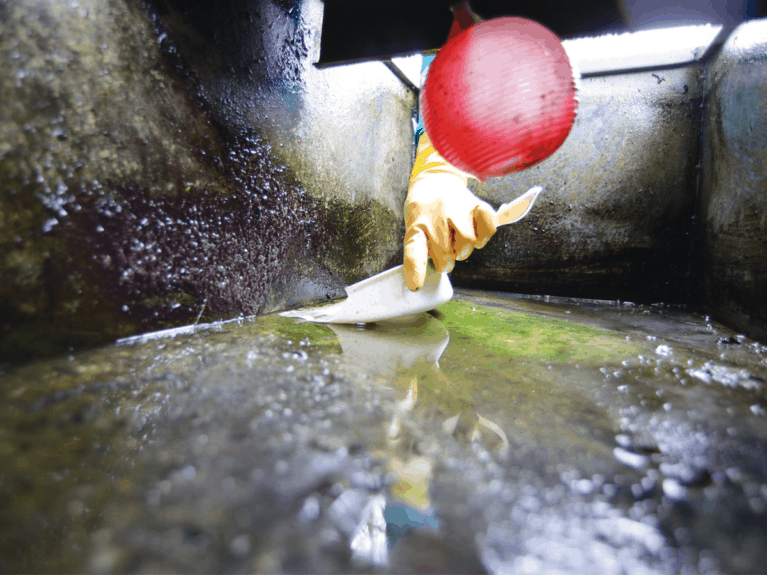Is your horse’s field looking slightly worse for wear? Get set for summer turnout with H&R’s top paddock maintenance tips

With longer daylight hours, better weather and plentiful grazing, it’s natural to want to maximise the amount of time your horse spends in the field. Increased turnout can be hugely beneficial – not only is it great for his general wellbeing, but it can also mean that he requires less hard feed, leading to a smaller feed bill for you. In swapping mucking out for poo-picking, you may well find that you save money on bedding, too.
But it’s not as simple as turning your horse out and forgetting about him – your paddock needs to be in great shape in order to keep him safe, contained and healthy.
TOP TIP
If your grazing is minimal or you need to restrict your horse’s grass intake, you may need to feed hay in the field to ensure your horse gets enough forage. Choose a dry area away from gateways and ensure that there’s enough space between each herd member’s pile. Always put out a couple more piles of hay than there are horses to prevent any arguments.
When the going gets tough
Turnout is only as good as the ground and grass, so it pays to set up and maintain a management routine to keep it in great shape.
Walk around your paddock and closely inspect the ground. Are there any holes or large stones that could potentially cause problems? Is the grazing good quality or has the field been overused and the grass soured as a result?
Resting grazing is important if you want to ensure that your field provides sufficient forage, but if you only have one field or paddock it can be difficult to rotate your turnout and allow it to recover. In this case, you can implement a strip grazing plan, using electric tape to section off a smaller area of the field and keep your horse within that area. Gradually move the strip and your horse every few weeks – the exact amount of time will depend on the size of your field, how quickly the grass grows and how rapidly your horse grazes it down.
If you’re fortunate enough to have more than one field and can sufficiently rest them throughout the year, you may find you have the opposite problem. To prevent your horse from gorging himself on abundant, lush grass, top your fields to about 5cm.
Regular maintenance
Although rolling your paddocks should have been done in the early spring months when the ground was still soft enough to make a difference, you can periodically harrow throughout the summer and autumn to lift moss and dead grass, encouraging a healthy sward. You should also regularly poo-pick, which will help to avoid souring the grass and will also help you manage your worming routine.

Patrol the borders
No matter what type of fencing you use, it’s important to check it regularly for any damage, sharp points or nails and weak areas that your horse may be able to push through.
Electric fencing – Ensure it hasn’t come loose from the post or begun to sag. Check each post – are they straight and secure, or have they started to buckle or lean? Look for earthing points, too – this is when the electric tape comes into contact with something other than the posts, such as a tree branch, which can disrupt the power to the fencing.
Post-and-rail fencing – Even if post-and-rail fencing looks sound, inspect it closely and test its structural integrity by hand. If it gives at all or feels as though the nails might not hold fast, it won’t stand up to your horse rubbing on it and should be repaired or replaced. You can lengthen the lifespan of wood fencing by applying a wood preserver after making any necessary repairs. This helps protect it against mould, rot and decay. A creosote substitute is more environmentally friendly than its traditional forebear and can also help to discourage your horse from chewing on fence boards. Apply the preserver with a brush and allow to dry for 24–48 hours before turning horses out.
TOP TIPS
- The lowest rail of your fencing should be about 45cm from the ground and the top rail 105–140cm – this should prevent your horse from being able to go under or over it.
- When inspecting fencing, look for empty nail holes, as the nails may be buried in the grass, creating a potential hazard for your horse.
Poisonous plants
As the weather warms up, it’s common for unexpected and unwelcome plants to appear in your paddocks. Take the time to familiarise yourself with the poisonous plants that are prevalent in your area and how best to remove them. Remember, some plants can cause serious harm to your horse even if he only ingests a tiny amount, so take care to remove all offenders from the field before turning him out.

Ragwort – the most common poisonous plant, ragwort is easily recognisable when it’s fully grown by its yellow flowers and serrated leaves. When it’s in its early stages of growth, it appears as leafy, green rosettes. Although most horses won’t eat it, it can cause serious liver damage if consumed, so it should be removed. Don’t cut or mow ragwort – instead, pull it up and burn it, making sure to wear gloves as it’s toxic on contact.
Acorns – unlike ragwort, horses will happily eat acorns, which fall in large quantities in autumn and pose a significant colic threat. Use your paddock inspection as a chance to check whether there are any nearby oak trees so you can come up with a contingency plan for when they start to drop.
Sycamore – the easily recognisable helicopter seeds and long, narrow-leaved seedlings are thought to be the cause of atypical myopathy, which has a 70% fatality rate and no treatment. Keep a close eye on your field and ensure that you remove any seedlings.
Yew – this is commonly found in gardens, so if you’re lucky enough to keep your horse at home, be aware that the cuttings from your garden may blow into the field. Yew leaves and berries are very toxic, even in small quantities.
Shelter from the storm
Whether your horse enjoys 24/7 turnout or comes in at night, it’s important to ensure that he has adequate protection from the elements. A field shelter offers shade, protection from wind and rain, and respite from biting flies, and is ideal for horses who live out, but a high, thick hedge can also provide protection from wind and rain. If your horse is turned out in a group, make sure that any field shelters have wide entryways to minimise the risk of higher-ranking horses trapping and bullying those at the bottom of the pecking order.
TOP TIP
Don’t assume your horse can be left to his own devices if he’s turned out 24/7 – checking on him and his field twice a day will help you to catch and resolve problems as soon as possible.
A stiff drink
A constant supply of fresh, clean water is just as important whether your horse lives in or is turned out. There are a number of options available for keeping him hydrated, but all require regular maintenance and daily checks to ensure he has enough water…
- if the field has been rested over the winter, check around the trough for weeds and nettles, which thrive in the damp soil and can make the trough less accessible.
- give it a scrub – whether you use a regular water trough or an automatic one, empty it out and give it a thorough scrub and a rinse before refilling it with fresh water. Thereafter, plan to clean the trough roughly once a week.
- inspect the mechanisms on automatic waterers. Plant debris can get caught up inside, causing blockages and stopping the water

TOP TIPS
- If you’re tackling a water trough that has been left for a considerable period of time, cleaning it with apple cider vinegar and a stiff brush will help to get rid of persistent slime. Never use bleach, as any residue that remains in the water is toxic.
- If your field or paddock has a stream running through it, your horse may be happy to use it as his primary water source. Streams can’t be maintained, though, nor can you keep track of how much water your horse is drinking, so keep a trough in his field, too, so you can at least ensure there’s always a palatable water supply.
Controlling the uncontrollables
There will always be elements that you can’t control, but being aware of them can help keep your horse happy and comfortable when he’s turned out. For example, your field may be near a pond, which means that the population of biting insects may be higher. If you’re aware of this, you can control the variables by ensuring that he’s adequately protected with fly rugs, repellents and a shelter to escape to. If there are public rights of way and you’re concerned about your horse being fed over the fence, you can implement double fencing to maintain a barrier between the field and the public. Being aware of your and your horse’s surroundings allows you to maximise their potential and minimise their risk.








